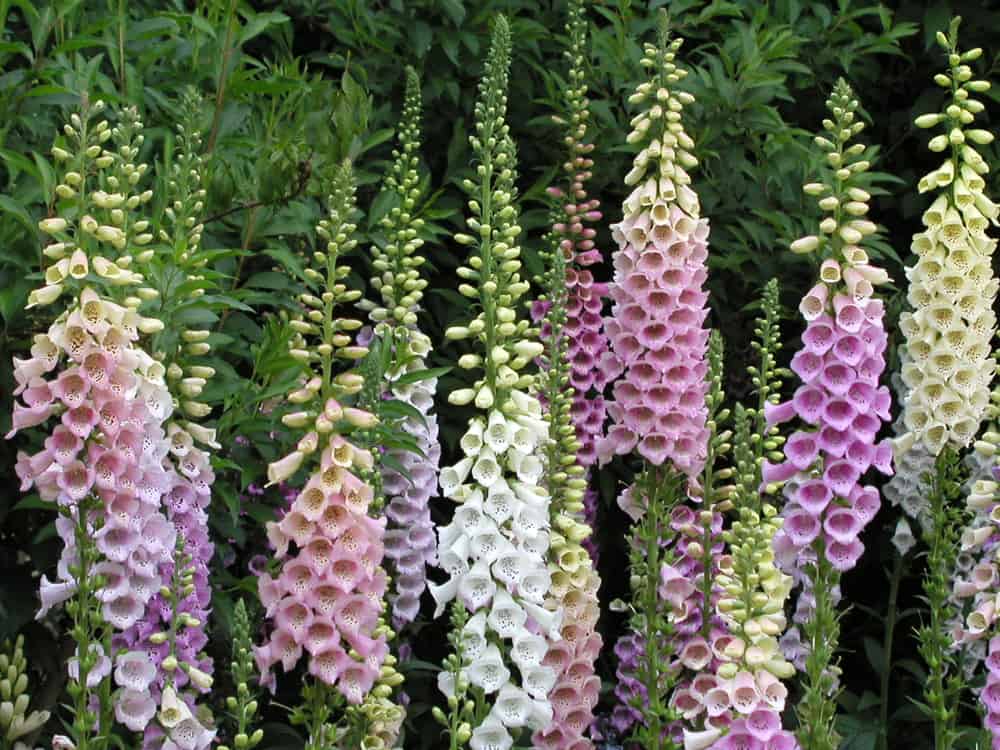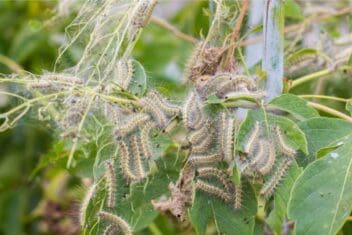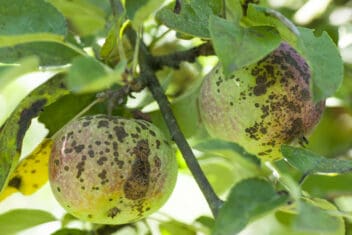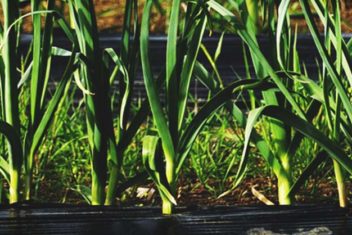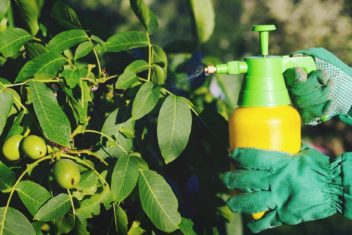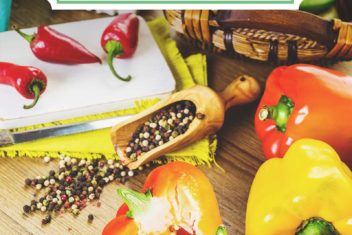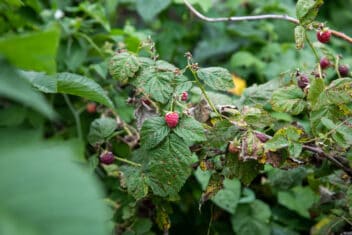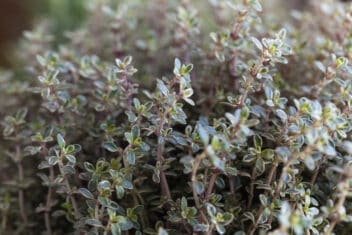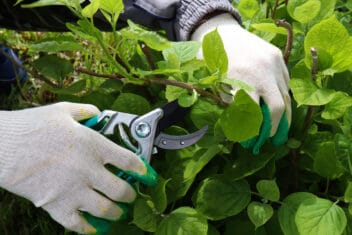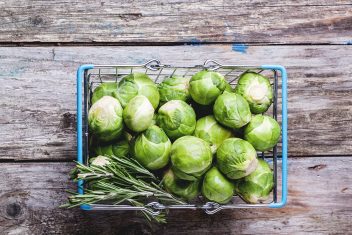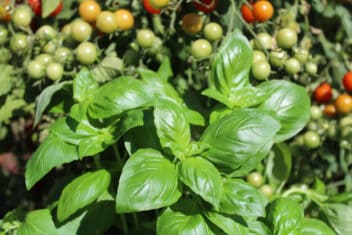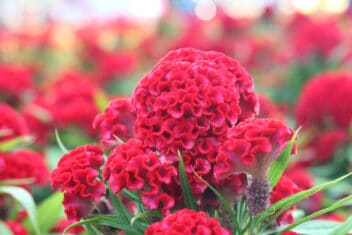Perennial species are ideal for low-maintenance gardens because you only need to plant them once. They’ll simply keep coming back each warm season, growing healthier and more abundant year after year.
While some of these plants reproduce via rhizomes, others are self-seeding perennials. Read on to learn more about these fabulous plants so you can decide which to add to your own garden this year.
What Does Self-Seeding Mean?
In simplest terms, it means that the plant creates and drops seeds within its own vicinity. Many annual flowers and herbs do this so their progeny can sprout the season after the parent plants die.
With self-seeding perennials, however, the parent plant survives along with its offspring. As you can imagine, this makes these species invaluable for filling out various garden areas.
Perennial plants generally follow a three-year pattern known as “sleeping, creeping, leaping.” They focus on developing root systems in their first year, sprout (and bloom) sporadically in the second year, and propagate abundantly in the third year.
If you plant self-seeding varieties, they’ll spread more vigorously because there are more parent plants around—ergo, more seeds.
10 Self-Seeding Perennials
Without further ado, here are 20 of the best self-seeding perennials. For self-seeding annuals, check out our guide.
1. Violets
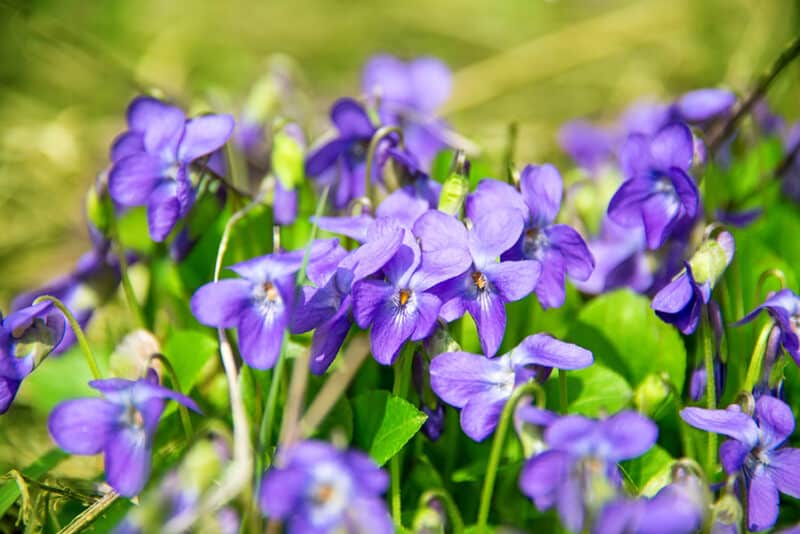
I love violets (Viola spp.) as a groundcover, as they’re edible and highly medicinal, in addition to being absolutely gorgeous. These low-growing, self-seeding perennials have a short blooming season, but their leaves last well into autumn.
Consider growing them as an alternative to grass. Note that any member of the Viola family will self-seed vigorously, and you won’t be able to contain them in one specific area.
2. Chives
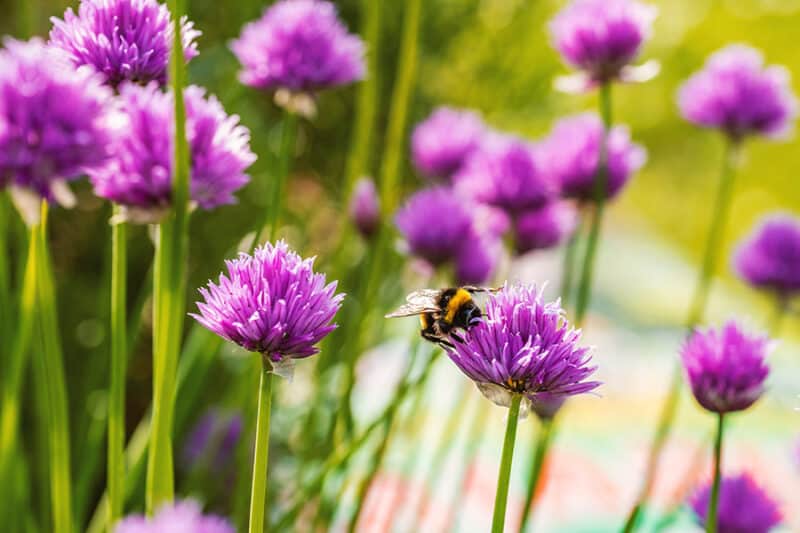
If you enjoy multi-purpose plants, you can’t go wrong with chives (Allium schoenoprasum). They’re ideal border plants to keep herbivores like deer and rabbits out of the garden.
Secondly, their flowers and leaves are entirely edible, with a lovely garlicky-onion flavor. Finally, those spicy blooms come in shades of white, lilac, and purple, making them great textural additions to floral and culinary beds alike.
These herbs spread like wildfire, and may turn up in unexpected areas. I planted some in the potager garden in front of my kitchen door a decade ago, and now they’re all over my property.
3. Purslane
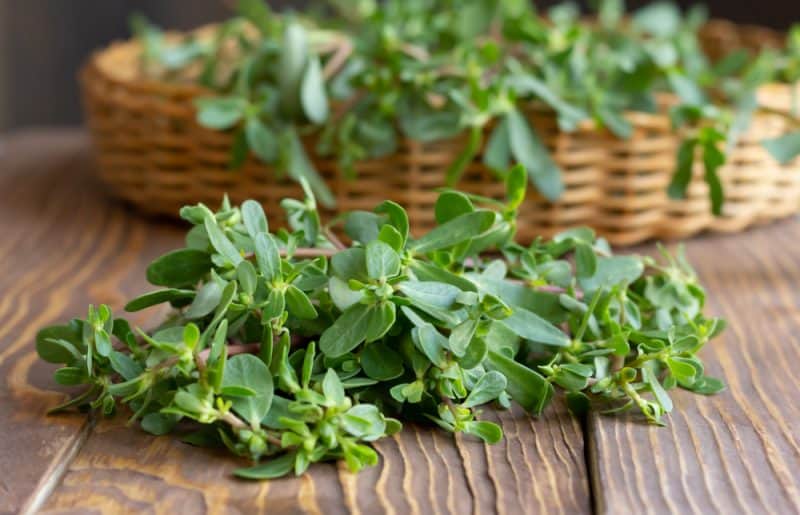
Speaking of edible plants, purslane (Portulaca oleracea) is one of the best self-seeding perennials for anyone interested in cultivating their own food.
This low-growing succulent is delicious and nutritious, and is ideal as a groundcover. It’s perennial down to Zone 4, and can be grown in almost any soil. Just ensure that it gets enough sunshine and water, and your descendants will be harvesting it 100 years from now.
4. Lovage
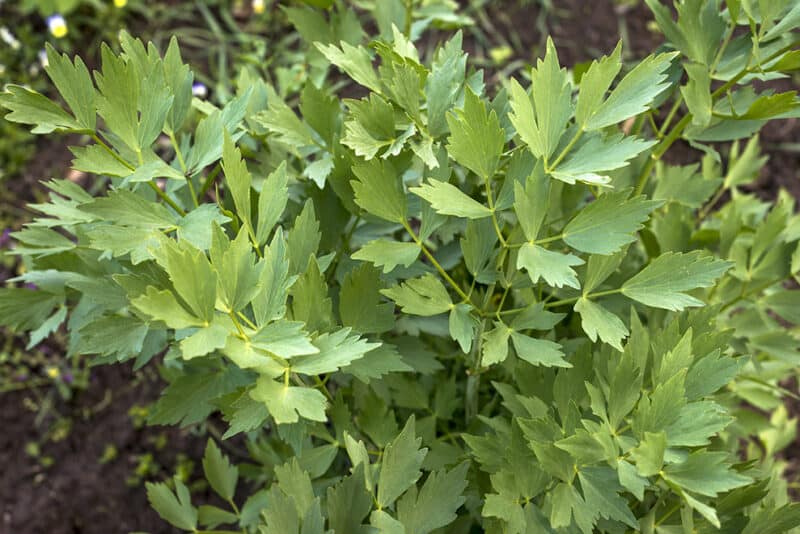
You may not be familiar with Levisticum officinale unless you’re fond of Medieval or Tudor culinary history, but it’s definitely worth getting to know. It’s a member of the carrot (Apiaceae) family, and is thus related to parsley and celery.
Its flavor is like a combination of both of those plants, only much more intense. Furthermore, while its well-known cousins only grow to about one foot tall, lovage can reach upwards of 9-10 feet in the right conditions.
5. Sorrel
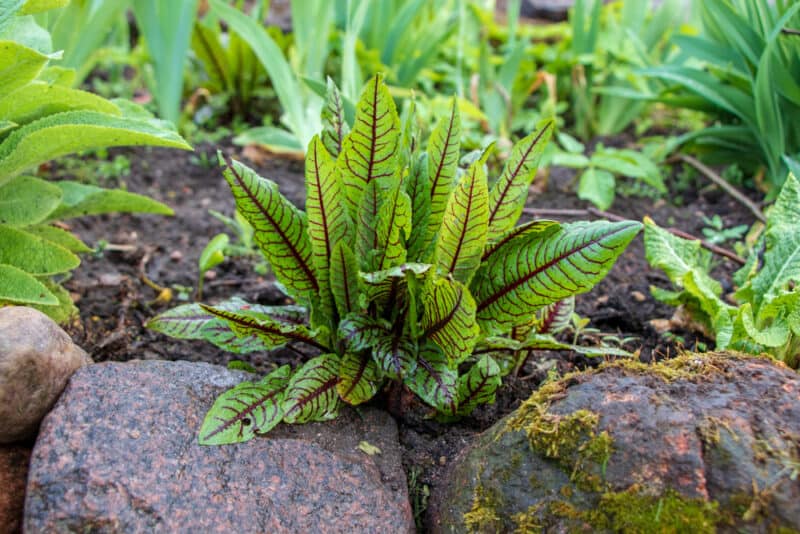
We’ve touched upon sorrel (Rumex acetosa) in other articles about perennial vegetables, but it deserves additional mention here because it self-seeds so eagerly. This lemony, leafy herbaceous perennial can—and will—take over wherever it’s planted, but that’s not necessarily a bad thing.
Its leaves can be eaten raw or added to soups and stews and have a high vitamin C content.
Just be careful eating sorrel if you have kidney issues: it’s high in oxalic acid and can be harmful if eaten in large quantities or too regularly.
6. Coneflowers
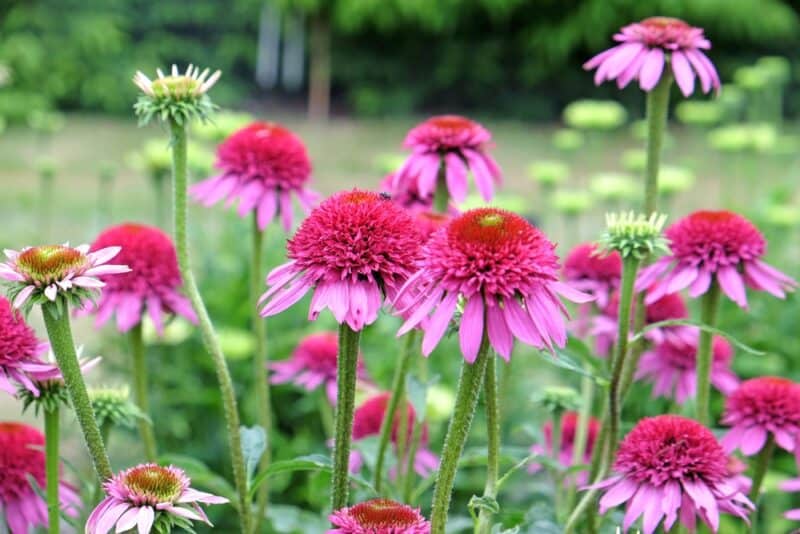
This is one of the most well-known medicinal species out there and happens to be stunningly beautiful as well. Echinacea plants (Echinacea spp.) come in a dozen different hues ranging from white through apricot and crimson to deep purple.
While they bloom biennially (e.g. every other year), they self-seed enthusiastically and can quickly fill an entire field within a few short years.
7. Evening Primrose
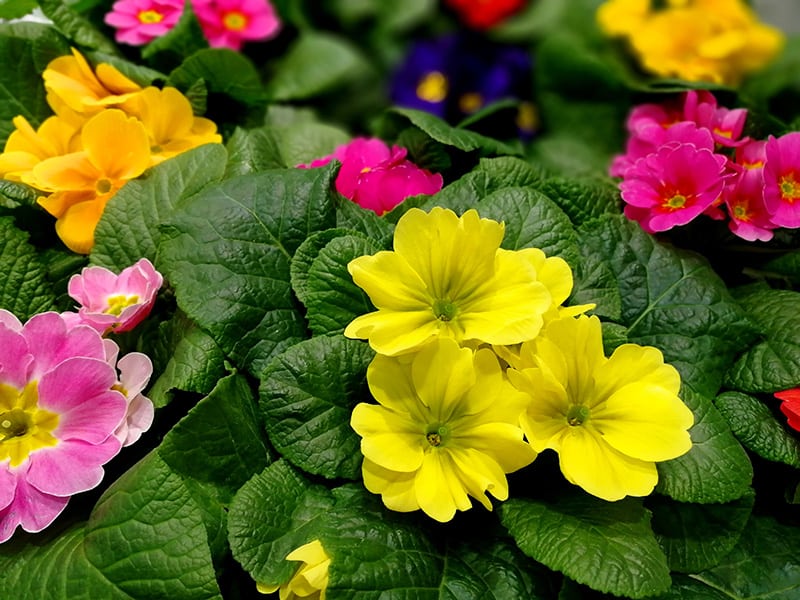
Speaking of medicinal plants, evening primroses (Oenothera biennis) are also self-seeding perennials that are lovely to have in any decorative or medicinal garden. These tall beauties, with their happy, lemon-yellow blossoms, tower over many other species.
They’re excellent for adding height and color along fences and other borders.
8. Mullein
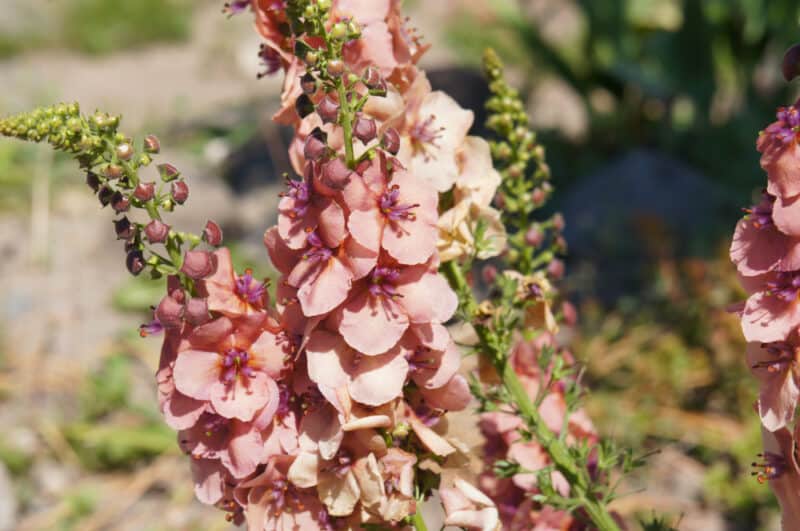
Although most mullein (Verbascum sp.) species are biennial, the “Southern Charm” hybrid variety is one of the prettier self-seeding perennials on this list. Unlike most other Verbascum cultivars, which have pale yellow blossoms atop their tall spikes, this one has pale pink, peach, or even white blooms.
That said, it has similar medicinal properties to common and greater mullein, and is ideal for any medicinal garden space. As an added bonus, its soft, downy leaves make a fabulous TP substitute in a pinch.
9. Milkweed
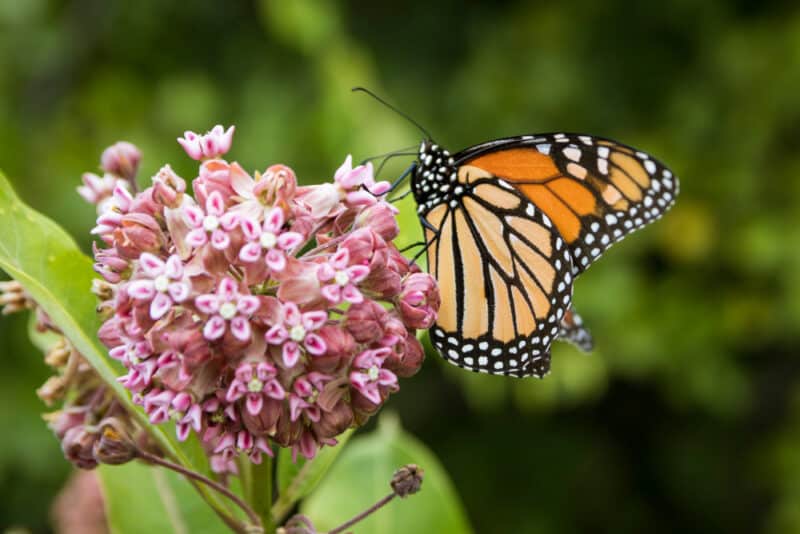
Most people know of common purple milkweed (Asclepias syriaca) as it’s a staple food for butterflies, but there are many other members of the Asclepias family that are just as gorgeous.
Furthermore, most of them also have medicinal properties. For example, A. tuberosa is also known as “pleurisy root”, and has been used by Indigenous peoples to treat chest complaints for centuries.
Interestingly, you can eat milkweed pods and buds, and use fibers from their stalks to weave cloth or create cordage.
10. Flax
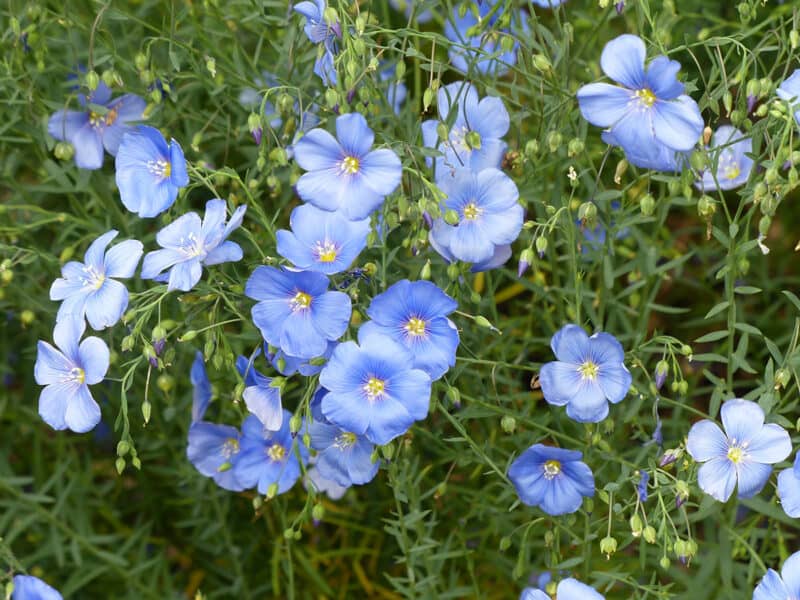
While we’re on the subject of spinning and weaving, flax (Linum perenne) is a great multi-purpose plant for those aiming to be as self-sufficient as possible. Its seeds are rich in protein, fiber, and Omega-3 fatty acids, and a gel made from boiled flaxseed meal makes a great egg alternative for vegan baking.
The linseed oil made from the seeds can be used for art projects, and its stalks can be retted and spun into fiber to weave linen cloth. Last (but not least), flax flowers are an incredible shade of sky blue and look exquisite in any garden setting.
11. Chicory
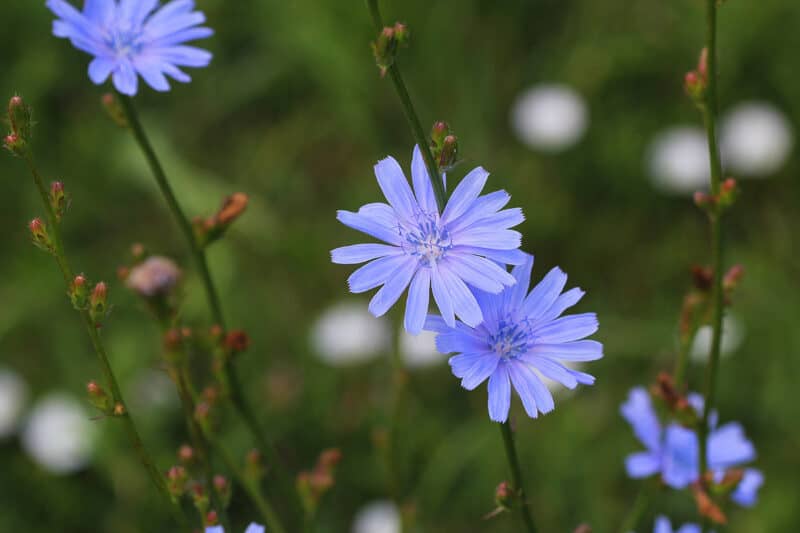
Since we’re on the subject of blue flowers, we need to mention this glorious plant. Chicory (Cichorium intybus) is a member of the daisy (Asteraceae) family with pale, almost periwinkle blue flowers.
Its leaves are edible—as are its lovely flowers—and have a pleasant, dandelion-like bitter flavor. Furthermore, its root can be roasted and ground up as a caffeine-free coffee substitute.
Since these plants thrive in depleted, disturbed soils, they’re ideal for replenishing land that’s been fallow for some time. Alternatively, consider cultivating them alongside a driveway or on little-used hillsides.
12. Blazing Star
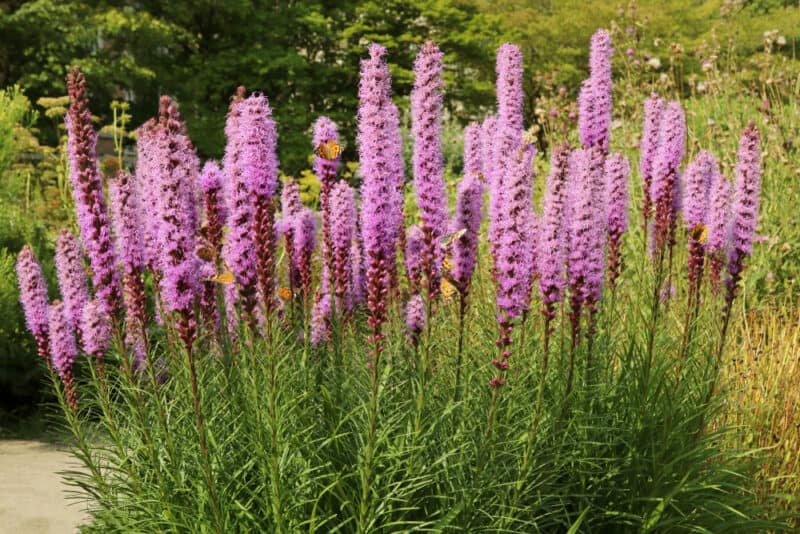
If you’re a fan of white or purple flowers, then consider blazing star (Liatris sp.) for your garden as well. Much like chicory, they can thrive in almost any soil as long as it’s well-draining, and offer tall plumes of striking color from July through to September.
As a bonus, it’s beloved by butterflies and hummingbirds alike! Plant some of these in your pollinator garden, and you’re certain to see several fluttery species around all season long.
Interestingly, Liatris self-propagates via self-seeding as well as through its root systems. As a result, be certain about this choice before you plant it. Once established, it’ll be very difficult to get rid of.
13. Coreopsis
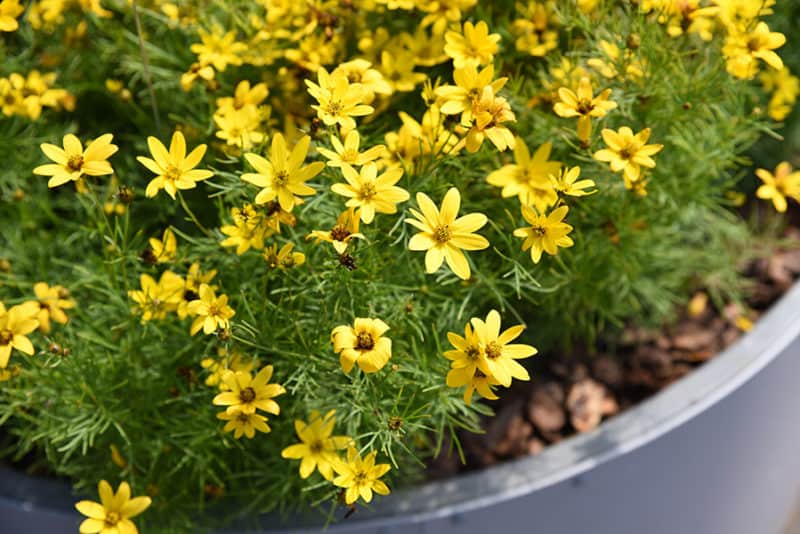
These cheerful flowers (Coreopsis spp.) come in shades of blue, purple, and red. They’re lovely interspersed with blooms in similar hues, and can thrive in most soils and sun exposures.
Like the other plants on this list, these self-seeding perennials scatter their seeds all over their immediate vicinity. As such, make sure you really like these flowers before planting any, as you’ll likely have them around forever.
14. Poppies
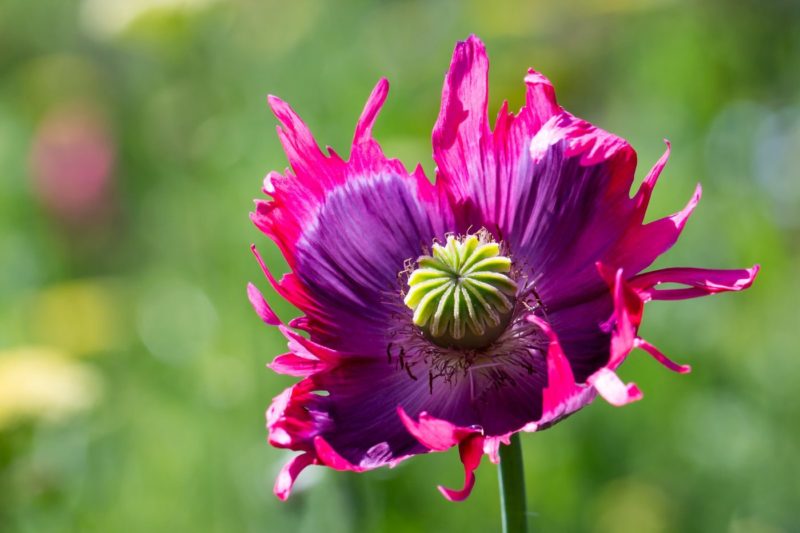
Poppies come in perennial, annual, and biennial varieties. If you’re looking for self-seeing perennials, then your best bet are the classic Oriental poppy (Papaver orientale), Iceland poppy (Papaver nudaucule), and Alpine poppy (Papaver alpinum). Each is suited to a different growing zone, so you’re likely to find one that works for your needs.
They’ll scatter their seeds all around their immediate area, and both birds and insects will disperse them as well. In addition to being beautiful, all poppies have medicinal properties as well. Their aerial parts can be brewed into tea or extracted into tinctures to alleviate pain, insomnia, and anxiety.*
Before planting any poppy species, however, take note of cultivation laws in your area. Some places forbid residents from growing any type of poppy, not just the opium variety (Papaver somniferum).
15. Lady’s Mantle
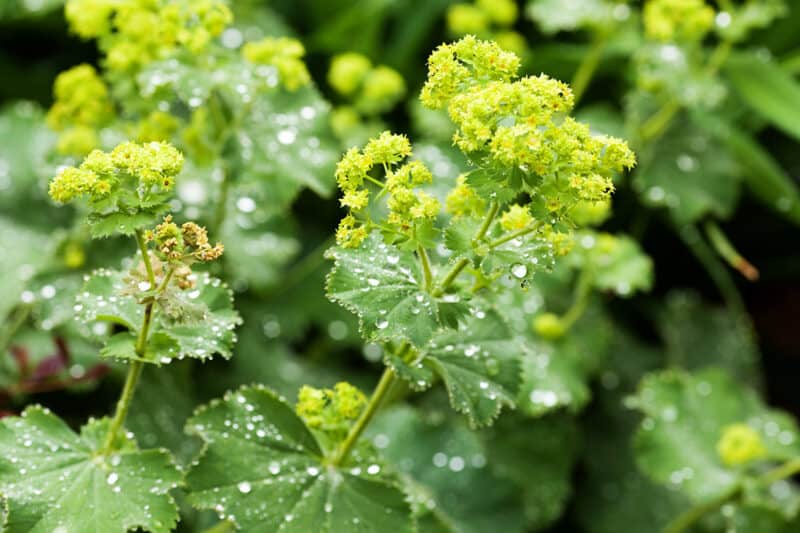
This is another wonderful addition to any garden space. Although Lady’s Mantle (Alchemilla mollis) has been traditionally grown for medicinal purposes, its lovely light green leaves and thick, yellow-green flowers are attractive in borders and as path edges as well.
It’s an ideal species for filling up gaps or creating mid-range visual interest, especially since it thrives in sun and shade alike.
16. Foxglove
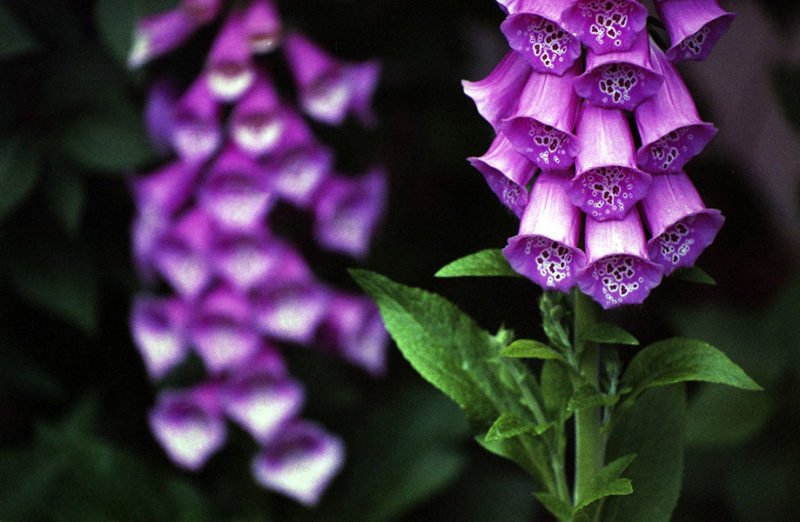
There are few garden flowers as lovely and magical as foxgloves (Digitalis sp.). While many are annual or biennial species, there are a few short-lived perennial species as well.
Unlike the rich purples and pinks of their annual or biennial cousins, perennial foxgloves come in muted shades of yellow, apricot, rust, and peach.
That said, these are indeed self-seeding perennials, so you don’t have to worry about planting new ones every year. If your garden is resplendent in pastel shades, be sure to consider some of these beauties for height and texture.
Just remember that foxglove is highly poisonous, and should never be handled with bare hands!
17. Columbine
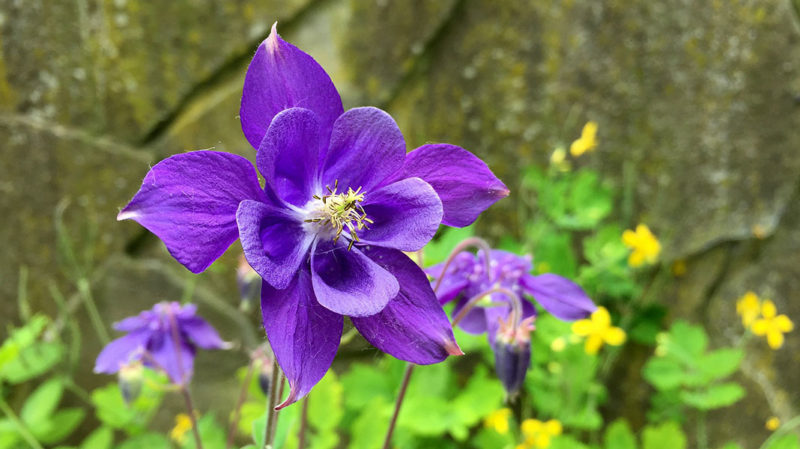
Although columbines (Aquilegia spp.) are listed as perennial species, they’re short-lived. In fact, they only return for a few years before dying off. Fortunately, they self-seed very readily.
As a result, if you leave their heads on after the growing season, they’ll spread out all over their nearby surroundings.
18. Sweet William
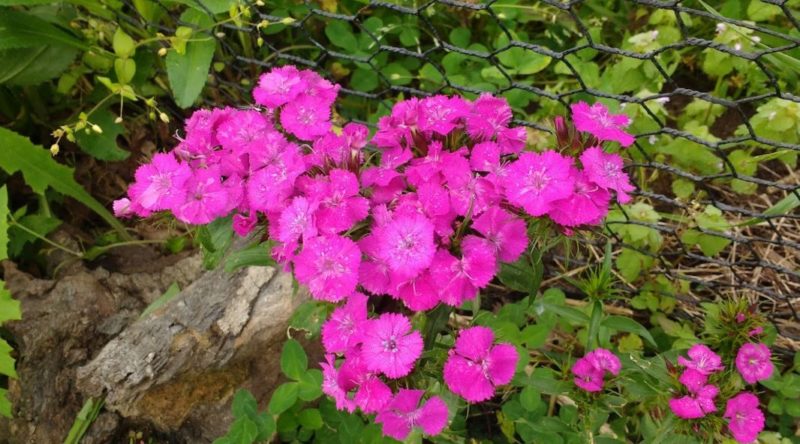
Of all the self-seeding perennials on this list, this one (Dianthus barbatus) has the cutest name, doesn’t it? Its flowers are just as adorable and come in a wide variety of two-toned hues.
This is another pollinator favorite, and if you have local hummingbird species, you’ll undoubtedly get several buzzing beauties visiting regularly.
19. Verbena
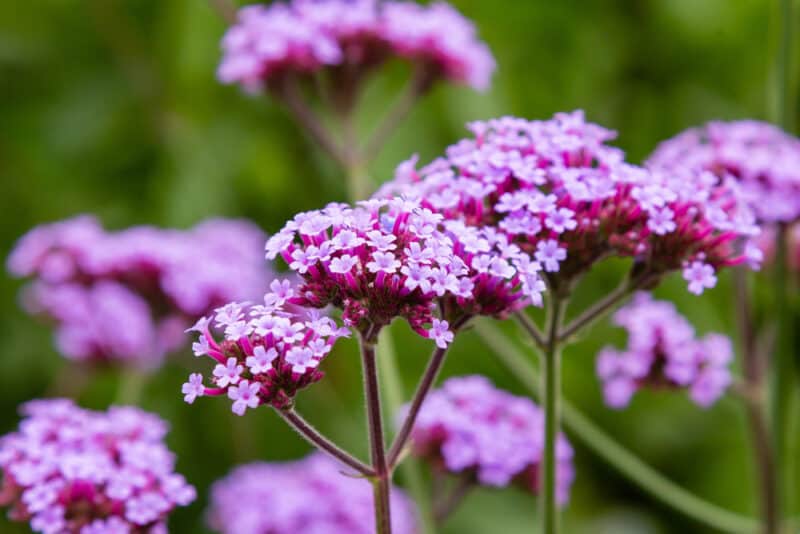
This type of vervain (Verbena officinalis) is a perennial that grows prolifically across Europe and Asia. It grows a little over a foot tall, and its purple blossoms are beloved by butterflies and bees. If you’re cultivating a pollinator garden, consider adding this beauty to the mix as well!
20. Hellebore
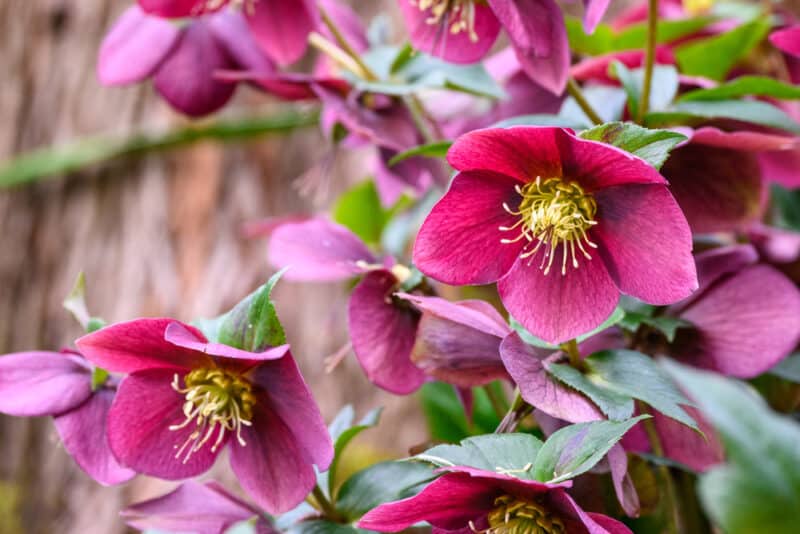
Also known as the lenten rose, hellebore (Helleborus orientalis) is a stunning, winter-blooming plant that thrives between zones 4 and 9. You may not get blooms until late April or May if you’re in the colder spectrum of those zones, but those in 7+ might see blossoms in March, hence its common name.
Like many other members of the buttercup (Ranunculaceae) family, hellebores contain highly toxic alkaloids. The root is so poisonous that it can cause cardiac arrest in even the most minuscule amounts.
Even gardeners who handle it with gloves have ended up in the E.R. after pulling said gloves off with their teeth!
If you plan to grow this perennial beauty, please be careful when tending it.
Additional Notes
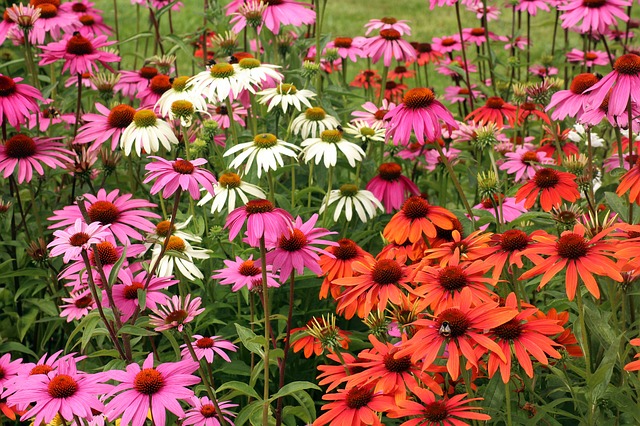
It’s important to remember that although self-seeding perennials can be excellent for filling up space, they can also get invasive. Some species can get aggressive and take over your land. Furthermore, they’re far more challenging to get rid of than annuals.
If you find these plants starting to overrun your space, make sure to deadhead adult plants before they go to seed. This will prevent them from spreading further. Additionally, you can pull up and compost or burn any plants that venture beyond the borders you’ve established for them.
Finally, if you use any of these species medicinally, please research thoroughly first. Many of them can be dangerous if misused and may contraindicate with medications.
We recommend consulting with a herbalist or naturopath before taking any herbal medicine and being sure about the plants you’re working with to avoid harming yourself or any loved ones.
